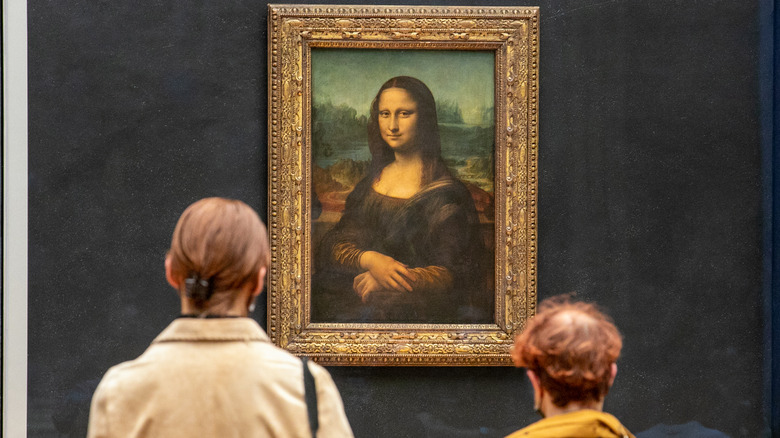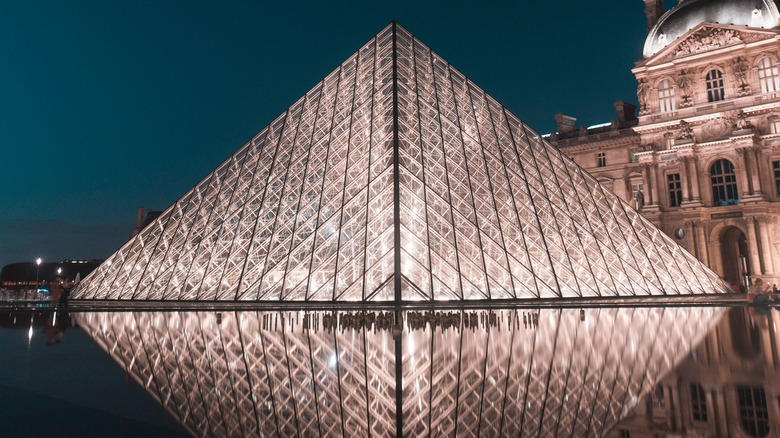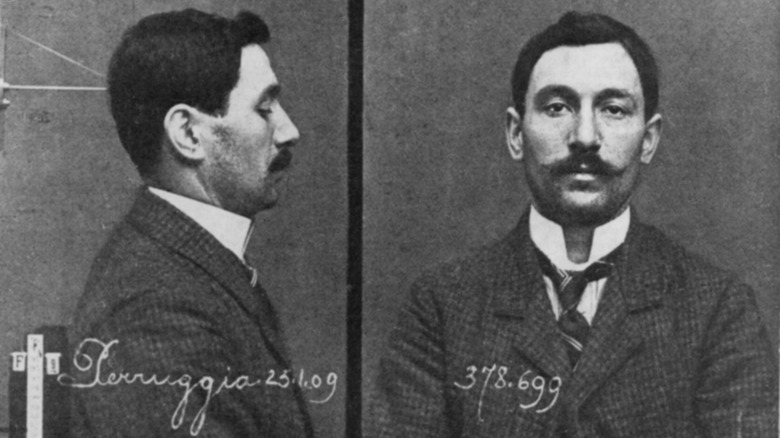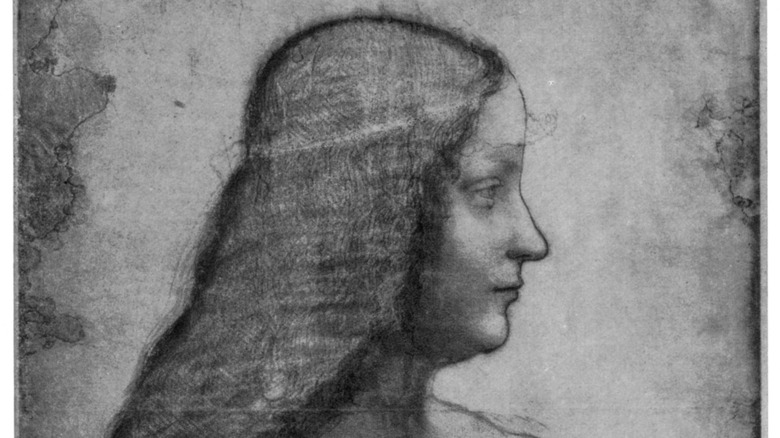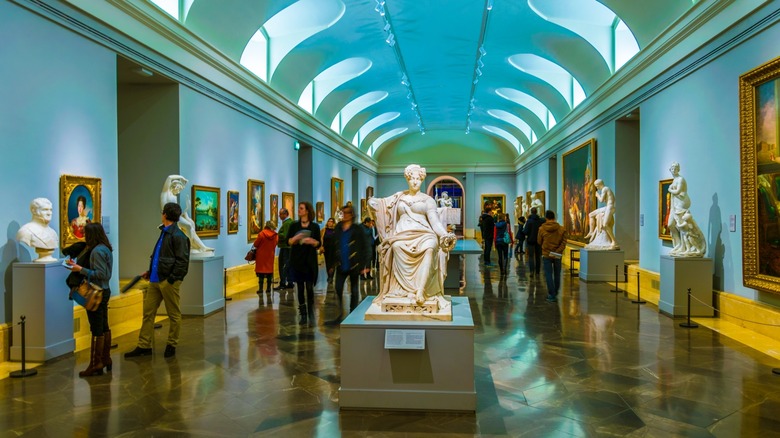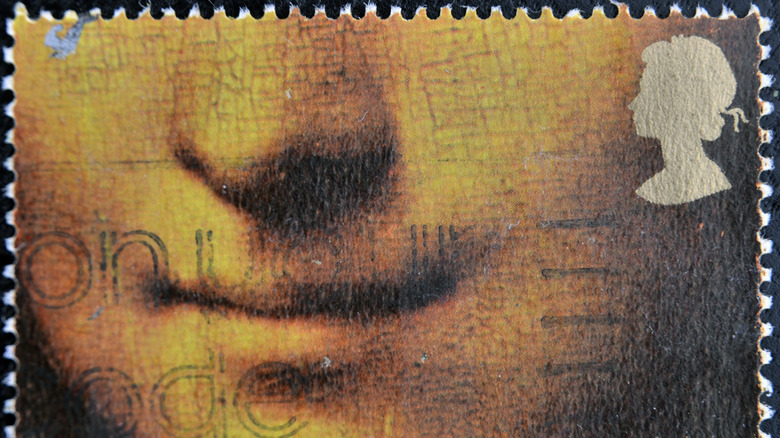Where Is The Original Mona Lisa?
The "Mona Lisa" is the most famous work by Italian Renaissance artist Leonardo da Vinci, and may be the most famous painting in the world. Da Vinci began it when he was about 51 and continued to work on it for years. This was well after he made some of his other masterpieces, like "The Last Supper" and The "Vitruvian Man," but before others including "St. John the Baptist" and da Vinci's self-portrait. The painting now belongs to the people of France and can't be bought or sold, according to France24.
According to The Guardian, about 30,000 people were visiting the "Mona Lisa" every day prior to the pandemic. Some had to wait hours in line before seeing the painting for about 30 seconds. She has her own mailbox and receives fan mail, but she has also been damaged and vandalized by people who weren't big fans, as Britannica notes.
So where is she?
The original "Mona Lisa" is currently at the Musée du Louvre, an art museum in a former Parisien royal palace. It is displayed in the museum's largest room — la Salle des États — and was moved there in 1966. The room has a history of its own: According to the Louvre, it was designed by architect Hector Lefuel and built between 1855 and 1857. It was originally painted with a scene celebrating France's Second Empire, which lasted from 1852 to 1870. Emperor Napoleon III (nephew of the more famous Napoleon I) used the room for legislative sessions until his fall from power. After that, it became part of the museum and originally housed French paintings.
The Louvre displays the "Mona Lisa" in the middle of the room surrounded by a protective glass case, which is temperature and humidity-controlled. This protects the painting from both over-eager visitors and from further deterioration since the wood on which it was painted has cracked (via the Louvre).
Where has the Mona Lisa been in the past?
Leonardo da Vinci began the painting in his Florence studio in 1503 and worked on it for many years. The painting came to France in the 1510s when da Vinci was invited to court by King Francis I. The king bought it from da Vinci in 1518, and it was housed in various palaces, as part of France's royal art collection, until it was taken during the French Revolution around 1798 (via the Louvre). Most of the royal collection was immediately put into a museum, but the "Mona Lisa" hung in Napoleon's bedroom for a while and wasn't put into the museum until around 1800, according to Britannica.
In 1911, the "Mona Lisa" was stolen from the Louvre, triggering a number of arrests including the Spanish cubist Pablo Picasso. In 1913, a Florentine art dealer told the police someone had tried to sell the painting to him. That man was Vincenzo Peruggia, a former employee of the Louvre. He and two colleagues had hidden in the museum overnight to steal it. The "Mona Lisa" went on an Italian tour before being returned to the Louvre (via Britannica).
However, it hasn't been in the museum continuously since then. During World War II, under German occupation, it was hidden in various places in the French countryside to prevent another theft. It has also gone on two world tours since the war, to the U.S. in 1963, and to Tokyo and Moscow in 1974 (via Britannica).
Who was Mona Lisa?
There have been dozens of theories about the identity of the woman in the painting. They've ranged from the slightly scandalous, that it was a self-portrait of da Vinci in drag; to the more mundane, that it was a portrait of his mother; or the more logical, that it was of a wealthy noblewoman like Isabella d'Este (via The Telegraph).
However, all those theories are wrong. According to The Telegraph, Giorgio Vasari, who wrote biographies of Renaissance artists, recorded in 1550 that the sitter was the wife of a Florentine silk merchant named Lisa Gherardini del Giocondo. For centuries, historians had been unsure if Vasari's biography was a reliable source. That was until the mid-2000s when two discoveries proved he was correct. In 2004, a Florentine teacher researching city archives discovered that Leonardo da Vinic's family knew the Giocondo's quite well as his father had drawn up several deeds for Lisa Gherardini's husband.
Around the same time, Dr. Armin Schlechter found further proof in the archives of the University of Heidelberg, Germany. A Florentine government official had made a note in a document in October 1503 that da Vinci was currently painting a portrait of Lisa del Giocondo, a date that fits with historians' guess about when the "Mona Lisa" was started (via University of Heidelberg). According to the Louvre, this is why the painting has long been known as "La Gioconda" in Italian and "La Joconde" in French. According to The Telegraph, Lisa Gherardini del Giocondo lived a fairly normal life as a wife and mother of five before retiring to a convent in her old age.
The Mona Lisa has a twin
While there are plenty of copies of the "Mona Lisa," one in Madrid's Museo del Prado was probably painted at the same time by one of Leonardo da Vinci's apprentices. They were probably even painted side-by-side, according to NPR. Infrared technology has allowed art experts to see beneath the upper layers of the paintings and showed that the same changes were made to the paintings at the same time.
Although they're twins, the copy in Spain looks significantly different from the original. Layers of varnish on the original have darkened all the colors, whereas the Spanish copy is much brighter, with vivid colors. Plus, details of the background and the dress are easier to see in the copy. Museum officials say that the copy shows what the original probably looked like in the 16th century. Restorers have also removed a black background from the Spanish copy as well as the varnish on the face of the subject, giving it a bright appearance (via NBC).
Why is the Mona Lisa smiling?
There are a few different ways in which Leonardo da Vinci created the famous smile on the "Mona Lisa." His early biographer, Giorgio Vasari, claimed that da Vinci kept his subject smiling by employing "people to play and sing for her, and jesters to keep her merry, to put an end to the melancholy that painters often succeed in giving to their portraits" (via The Atlantic). He then recreated that smile using a painting technique called sfumato, which has a soft, shaded look. He mixed only a little pigment into oil to create his paints, then applied it a tiny bit at a time in thin layers. He would add more layers as time passed, creating a three-dimensional illusion.
Da Vici was a scientist as well as an artist, and with cadavers in the morgue of the Hospital of Santa Maria Nuova in Florence to learn more about the human body. He even dissected the faces of the cadavers, discovering how facial muscles move to create different expressions (via The Atlantic). While it may sound gross, it's part of why the "Mona Lisa" seems so lifelike, with her mysterious and alluring humor.
